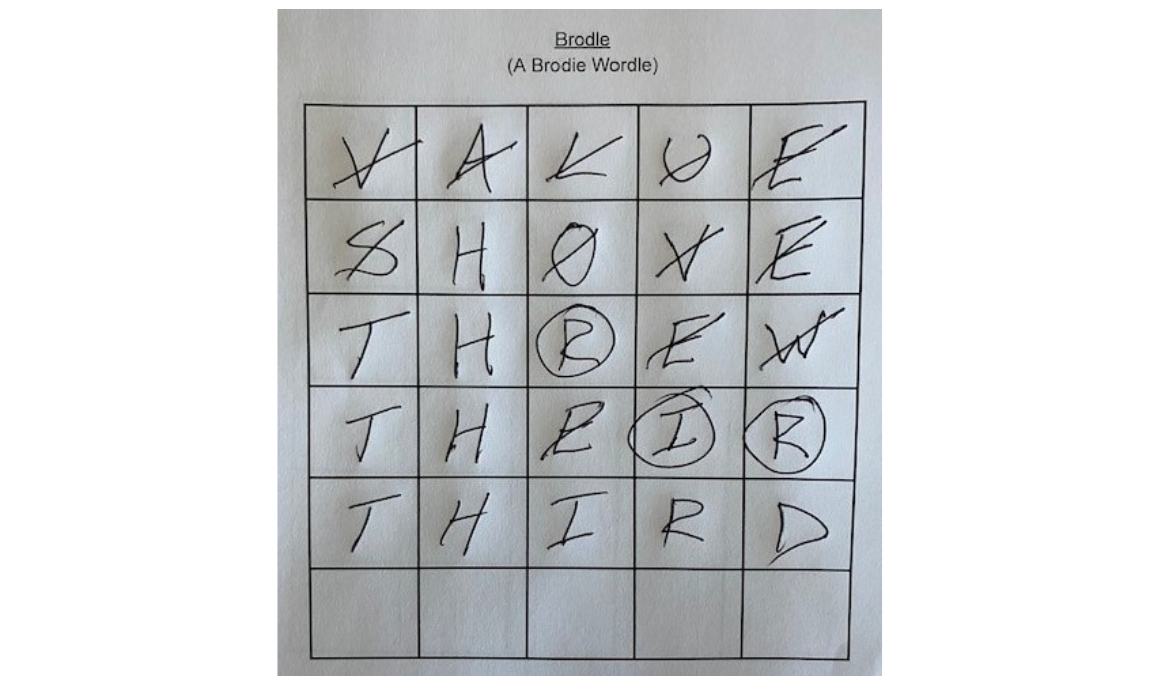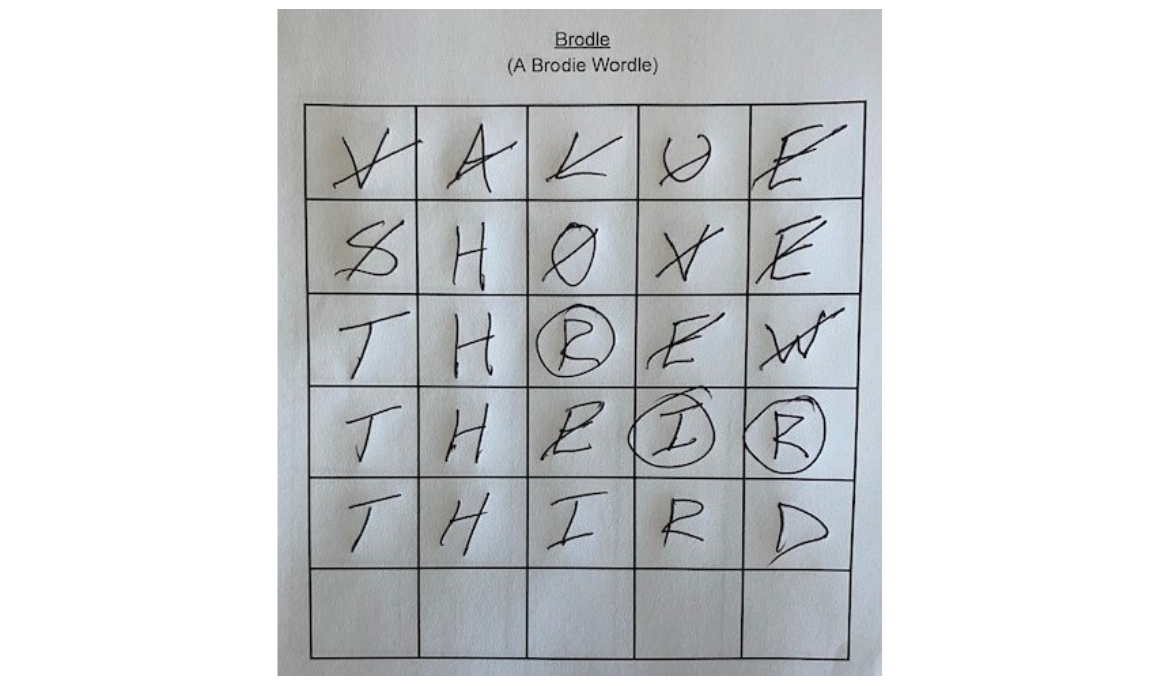

Brodie calls his Wordle creations “Brodles”
“ Take the plunge; participate; try; give me your best effort; make mistakes; learn from your mistakes; it’s not impossible; don’t give up; you only have a certain amount of chances; you may fail, but if you do, get up and try again.” These are words and phrases used by teachers, coaches, parents, guardians, motivational speakers, and anyone else of that ilk all over the world, and for good cause. It’s because these words, statements and adages encourage one to learn. They are a big part of the pedagogical process.
In fact, they are the learning process in a nutshell, and a great way to put these philosophies to use in the classroom is by playing a simple little game that only involves five letters and 30 squares.
Recently a friend came over for dinner. Like me, she is a teacher and when we get together, we do exactly what I imagine our students imagine English teachers do for fun – we play word games: Scrabble, Boggle, Bananagrams, etc… On this particular evening after wine, dinner and word games, she showed me a Wordle and we worked on it together. Wordle is a game featured in The New York Times created by Josh Wardle, a software engineer, and his partner Palak Shah. Being a word meister I was immediately hooked. I put the game on my phone and continued to check the 24-hour countdown for the next Wordle like Pavlov’s dog, or a kid on Christmas Eve. The next day there it was, the gift, wrapped in 30 blank boxes in rows of five – no hint or clue provided.

Scot Brodle
With Wordle, there is no dipping of the toe to test the waters; one has to just jump right in the word pool with a five-letter word. Any five-letter word. There is the option of going online and selecting the best word to start a Wordle (a “Wordlebot” claims that it’s crane), but after only playing a few weeks, I don’t think it matters which word one starts with. I did “beard” for a few days, which worked well, meaning that I had a few green boxes (a sign that the letter is in the right place) and a few beige (which indicates the letter is in the word, but that it’s in the wrong place) – then “beard” didn’t work at all (all the letters stay blank). I have since taken notice of every five-letter word I hear or see in print.
One day whilst sitting in traffic I had an epiphany – cue angelic chorus: “I could do this in class.” The idea was as simple as they come: create a worksheet with a grid (six rows of five boxes), select a random five-letter word, and using the projector at the front of the class have students take turns solving the mystery: Cross out letters that aren’t in the word, circle letters that are in the word, and advance letters that are correct. I put it to work and it was an immediate hit. This simple little game has become a classroom sensation. When we wordle, the class ebbs and flows with activity as each student tries to figure it out. I’m telling you I can see the gears spinning in their heads, and the tension really builds after the third guess when the entire room starts taking the activity very seriously. Even the class clowns are on task.
These wordles have replaced the dull, monotonous classroom warm-up. In fact, after we complete one, and I’m not kidding,I’ve had students literally chanting for another. They have surpassed all my other bribes. “Okay,” I tell them, “if we finish today’s assignment, we can do a wordle.”
I’m not sure how long this craze will last. Seventh graders are a very fickle bunch; it could just be a Pet- Rock (sorry, am I showing my age?), or a Beanie Baby (still showing my age?), or how about silicone bubble pops (there we go). It doesn’t really matter. As any teacher knows – if something is working in the classroom, keep doing it. Don’t stop ‘til you get enough.
The Discussion 0 comments Post a Comment